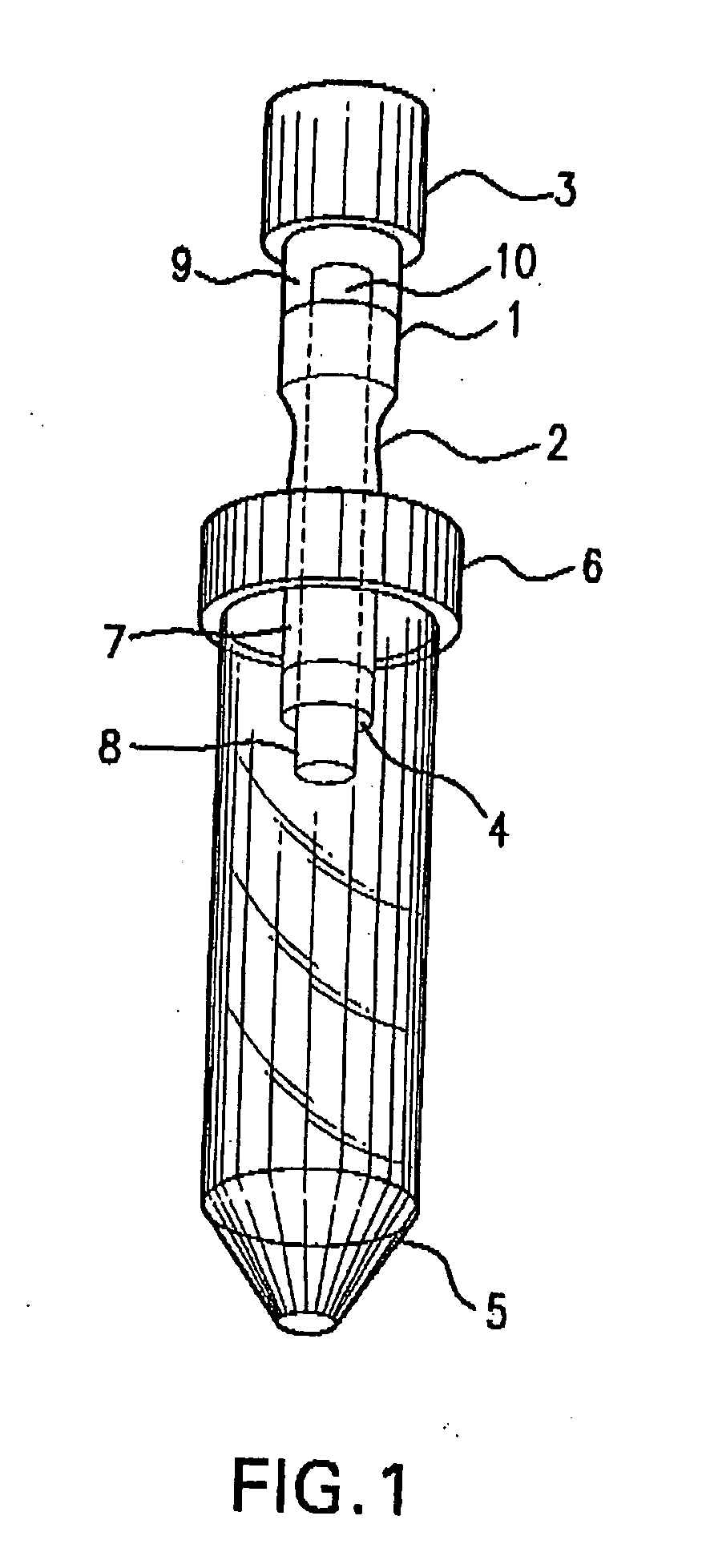Antimicrobial medical articles containing a combination of anti-infective compounds, octoxyglycerin, salicylic acid, and sesquiterpenoids
a technology of anti-infection and medical articles, which is applied in the field of anti-infection medical articles, can solve the problems of contaminated examination gloves, tongue depressors, stethoscopes, and stethoscopes that could transmit infection, and achieve the effect of great anti-infection properties
- Summary
- Abstract
- Description
- Claims
- Application Information
AI Technical Summary
Benefits of technology
Problems solved by technology
Method used
Image
Examples
working examples
6. WORKING EXAMPLES
6.1. Example 1
[0096] Synergistic activity of octoxyglycerin in combination with the antimicrobial compounds chlorhexidine, triclosan and a silver salt when impregnated into both the internal and external surfaces of urinary catheters
Impregnation of Urinary Catheters.
[0097] There were two steps in the impregnation procedure of urinary catheters. In the first step, both the internal and external surfaces of urinary catheters were impregnated with a solution of the following antimicrobial compounds: chlorhexidine (a mixture of chlorhexidine free base [CHX] and chlorhexidine acetate [CHA]) and triclosan (TC). In the second step, a polymer coating was applied to the internal and external surfaces of the impregnated catheter by dipping the catheters in a solution of 1.5% hydrogel and 1.5% polyurethane 80AE to control the release of the antimicrobial compounds from the catheter matrix. Octoxyglycerin (O) and a silver salt could be impregnated into the catheter throug...
example 2
6.2. Example 2
[0114] Synergistic activity of octoxyglycerin in combination with the antimicrobial compounds chlorhexidine and minocycline when impregnated into the external surface of central venous catheters
Impregnation of Central Venous Catheters.
[0115] Polyurethane central venous catheters were prepared according to the following one-step method: 1) Prepare 100 ml of an impregnation solution as follows: a) uniformly suspend various mixtures of the antimicrobial compounds chlorhexidine acetate (CHA; 3.0%) or chlorhexidine free base (CHX; 3%), minocycline (MN; 1.0%), triclosan (TC; 1.0%), or octoxyglycerin (3%) in 100 ml of 50% THF / 50% methanol; b) further dissolve into the impregnation solution polyurethane 93A (4%) and polyurethane 60D (2%); 2) dip the catheter into the impregnation solution; 3) immediately remove the catheter from the impregnation solution; and 4) air dry the catheter for 24 hrs at room temperature.
Model for Evaluation of the Antimicrobial Efficacy in Centr...
example 3
6.3. Example 3
[0129] Synergistic activity of octoxyglycerin in combination with the antimicrobial compounds chlorhexidine and minocycline, either alone or in combination with bismuth nitrate or triclosan, on the adherence of P. aeruginosa in central venous catheters
Impregnation of Central Venous Catheters.
[0130] The catheters were impregnated with anti-infective compound according to the one-step method described above in Example 6.2.
Agar Tract Model.
[0131] Culture tubes containing 12 ml of agar media (1.0% Bacto agar, obtained from Difco, plus 20% bovine adult serum (Sigma)+0.5% Parmalat milk+0.03% TSB in phosphate-buffered saline) were prepared. Heat-sealed segments of test catheters, 4 cm in length and impregnated with various combinations of antimicrobial agents as described above in Example 6.2, were inserted vertically into the agar so that 3.5 cm of the catheter was embedded into the agar and 0.5 cm of the catheter protruded above the agar surface. Six catheter segments...
PUM
| Property | Measurement | Unit |
|---|---|---|
| water absorption | aaaaa | aaaaa |
| length | aaaaa | aaaaa |
| length | aaaaa | aaaaa |
Abstract
Description
Claims
Application Information
 Login to View More
Login to View More - R&D
- Intellectual Property
- Life Sciences
- Materials
- Tech Scout
- Unparalleled Data Quality
- Higher Quality Content
- 60% Fewer Hallucinations
Browse by: Latest US Patents, China's latest patents, Technical Efficacy Thesaurus, Application Domain, Technology Topic, Popular Technical Reports.
© 2025 PatSnap. All rights reserved.Legal|Privacy policy|Modern Slavery Act Transparency Statement|Sitemap|About US| Contact US: help@patsnap.com

